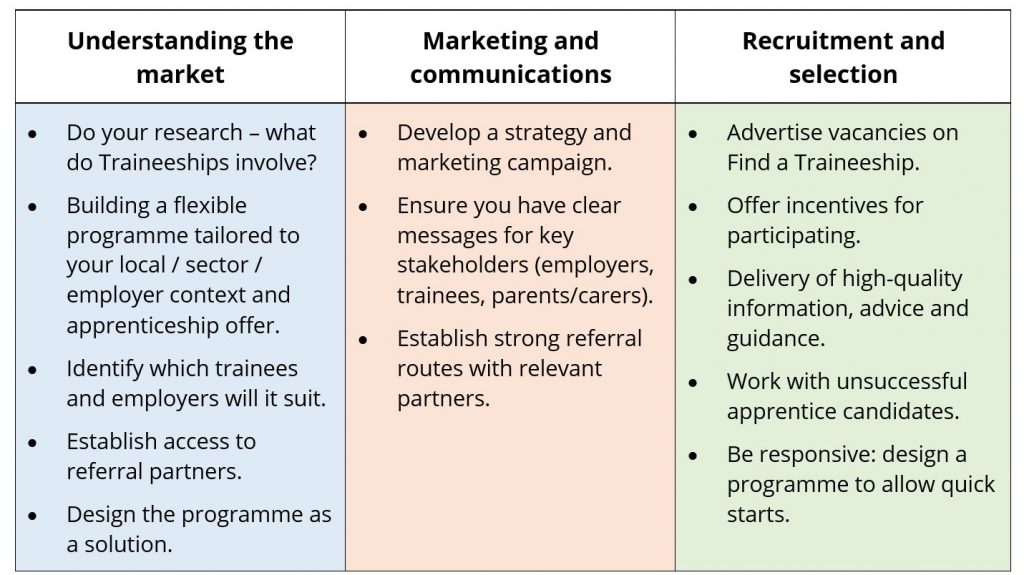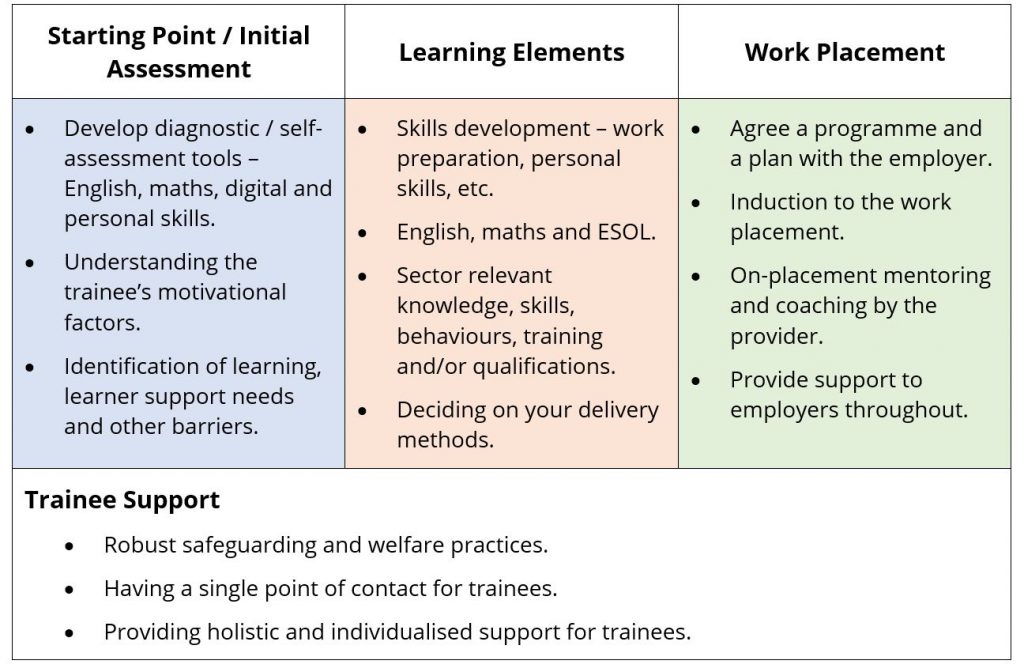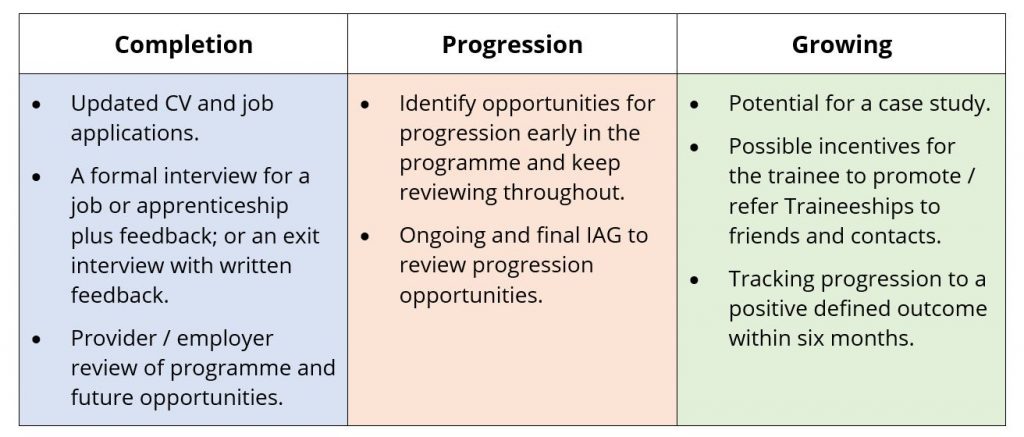
Congratulation if you’ve been successful in securing a February 2021Traineeship contract.
In this post – based on our work with many Traineeship providers – we’re sharing the critical issues to consider when setting up your programme, and links to further support.
Thinking about the employer
Do you have a clear business development plan in place?
You may tried and tested messages that you know will resonate with employers but do these need adjusting in the current climate?
Some organisations are responding to schemes like Traineeships as a socially responsible employer; others focus on direct benefits. There are many reasons to get involved:
- contributing to tackling youth unemployment and Covid recovery challenges
- access to flexible entry-level programmes specific to the needs of their organisation
- streamlined recruitment and succession planning
- get a good measure of trainees before full-time employment or apprenticeships
- confronting skills shortages
- developing a loyal, talented and more diverse workforce
- finding opportunities for current employees to practice their to training and mentoring skills
It’s important to be realistic and tell them about what’s required of them upfront. For example, employers can need to commit to:
- time to plan
- building relationships with you as the Traineeship provider
- staff time to induct, supervise, mentor and give feedback
- cost of resources for work experience, like equipment, tools, uniform, and PPE. Traineeship incentives can be used to off-set this cost – £1,000 per trainee up to a maximum of 10 learners for new or expanding employers.
(Hot off the press (27/01/21) is Version 3 of the Traineeship Framework with updates to the Work Experience and Employer Involvement section and the Employer Incentive Payment section which contains information about the portal that is now available.)
Thinking about the trainee
How do you plan to recruit trainees?
What are the kind of messages you might use to describe the benefits of a Traineeship?
Here are a few examples…
- “Helps you prepare for an apprenticeship or job where you haven’t got the appropriate skills or experience. You’ll get:
- Work preparation training including CV writing, interview skills and what to expect in the workplace.
- Support to improve your English, maths and digital skills if needed.
- Industry learning and / or qualifications”
- “A high-quality work placement of at least 70 hours letting you trial a job / sector and get understand what it’s like inside an organisation.”
- “An interview for an apprenticeship or job or an exit interview with written feedback.”
- “Develop your personal skills like communication, confidence and self-awareness.”
- “Keep your entitlement to benefits when you’re training.”
- “Join a flexible and adaptable programme that suits you.”
Again, it’s important to be realistic about the challenges and how these might be addressed:
- For some trainees, unpaid work might be difficult
- Parents, carers and friends may have negative perceptions
- Finding a Traineeship locally (both the provider and employer), particularly where transport is limited
- The costs and practicalities of childcare, travel to work, and suitable work clothing
With these in mind, how might you set up the programme itself?
What are the key areas that you will need to consider as a provider?
Developing an effective Traineeship programme
Here’s a checklist of things to think about as you plan and deliver Traineeships.
Let’s start with planning, marketing and recruitment:

The training programme and work placement:

Completion and progression:

Supporting you to launch and deliver Traineeships
SDN are working closely with providers to deliver traineeships that will give you practical guidance, tools and confidence to establish and grow your traineeship offer.
If you would like to find out more about the support we offer, please get in touch.
